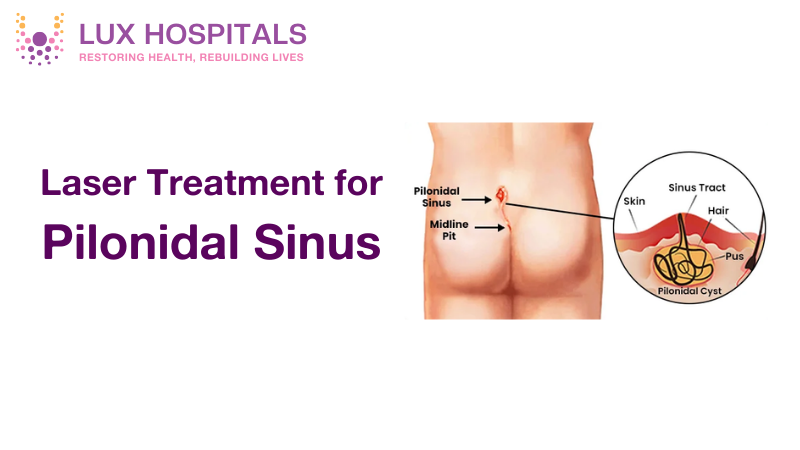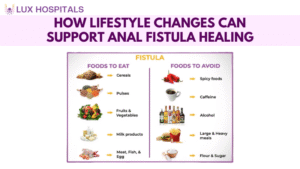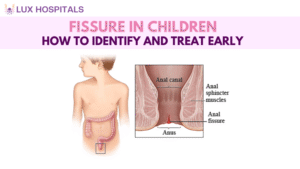Laser Treatment for Pilonidal Sinus: What You Need to Know

Introduction
A painful disorder called pilonidal sinus affects the skin around the tailbone, causing pain, swelling, and infection. The most common cause is skin piercing by hair, which causes inflammation and the formation of an abscess. Traditional methods like drainage and excision can have long recovery times and can lead to recurrence.
However, laser treatment for pilonidal sinus has emerged as a minimally invasive and effective option. In this article, we’ll explore how laser treatment works, its benefits, recovery, and what to expect from the procedure.
What is the Pilonidal Sinus?
A pilonidal sinus is a little cyst or tunnel that forms near the base of the spine, directly above the buttocks. When hair follicles become buried beneath the skin, an infection and abscess emerge. It can grow chronic and cause excruciating discomfort if treatment is not received.
Pilonidal Sinus Causes
Several factors contribute to the development of pilonidal sinus, including:
- Excessive hair growth in the lower back and buttocks
- Prolonged sitting, especially in those with sedentary jobs
- Friction and pressure from tight clothing
- Poor hygiene leads to bacterial infections
- Genetic predisposition to ingrown hairs and skin conditions
Pilonidal Sinus Symptoms
The symptoms of pilonidal sinus vary depending on the severity of the condition. Common pilonidal sinus symptoms include:
- Pain and swelling near the tailbone
- Redness and warmth in the affected area
- Pus or blood drainage from the sinus opening
- Fever and fatigue in case of severe infection
- Unpleasant odour due to bacterial buildup
If you experience any of these symptoms, seeking pilonidal sinus treatment is crucial to prevent complications.
Laser Treatment for Pilonidal Sinus
How Does Laser Treatment Work?
Laser treatment is a modern pilonidal sinus surgery technique that uses high-energy laser beams to remove the infected tissue and seal the sinus tract. The procedure is performed under local or general anaesthesia and involves the following steps:
- Cleaning the area to remove debris and bacteria.
- Laser ablation destroys the sinus tract and surrounding infected tissue.
- Closure of the wound, allowing faster healing and reduced scarring.
The risk of recurrence is much lower with this minimally invasive treatment than with traditional surgical methods.
Benefits of Laser Treatment
Laser treatment offers several advantages over conventional pilonidal sinus surgery:
- Minimally Invasive: Less pain and suffering because there aren’t any big scars.
- Faster Recovery: Patients can resume daily activities within a few days.
- Lower Recurrence Rate: Laser technology effectively seals the sinus, preventing reinfection.
- Reduced Scarring: Unlike open surgery, laser treatment leaves minimal scars.
- Less Postoperative Care: Requires fewer dressing changes and less wound maintenance.
Who is a Candidate for Laser Treatment?
Laser treatment is suitable for patients who:
- Have recurrent pilonidal sinus infections
- Experience chronic pain and abscess formation
- Prefer a minimally invasive approach with quicker healing
- Have failed previous treatments, including incision and drainage
The best way to find out if laser treatment is for you is to speak with a pilonidal sinus expert.
Recovery and Post-treatment Care
What to Expect After Laser Surgery
Patients undergoing laser pilonidal sinus surgery can expect the following:
- Minimal pain compared to traditional surgery
- Discharge on the same day in most cases
- Return to normal activities within a week
- Reduced need for pain medication
Post-Treatment Care Tips
To ensure a smooth recovery after pilonidal sinus treatment, follow these care tips:
- Maintain Hygiene: Keep the area clean and dry.
- Avoid Prolonged Sitting: Take breaks to reduce pressure on the tailbone.
- Wear Loose Clothing: Prevent friction and irritation.
- Hair Removal: Regular shaving or laser hair removal can prevent recurrence.
- Follow-Up Visits: Regular check-ups help monitor healing and avoid complications.
Comparing Laser Treatment with Traditional Surgery
| Aspect | Laser Treatment | Traditional Surgery |
| Invasiveness | Minimally invasive | Open wound surgery |
| Pain Level | Mild | Moderate to severe |
| Healing Time | 1-2 weeks | 4-6 weeks |
| Scarring | Minimally | Noticeable |
| Recurrence Rate | Low | Moderate to high |
When to Seek Medical Help
While laser treatment for pilonidal sinus is effective, it’s essential to seek medical attention if you notice:
- Persistent pain or swelling after the procedure
- Excessive drainage or signs of infection
- Recurrence of symptoms despite treatment
Early intervention can help prevent complications and ensure a successful outcome.
Conclusion
Pilonidal sinuses can now be treated with laser therapy, a less invasive procedure that promotes quicker healing and lowers recurrence. A healthcare professional can help you choose whether laser treatment is the best course of action if you’re experiencing pilonidal sinus problems.
By following proper aftercare and preventive measures, you can minimize the risk of recurrence and enjoy long-term relief.
Frequently Asked Questions
A pilonidal sinus is a little tunnel or cyst close to the tailbone that is typically brought on by infection, irritation, or ingrown hairs.
Yes, laser treatment is a minimally invasive and effective option for pilonidal sinus removal, offering faster recovery and lower recurrence rates.
The cost of pilonidal sinus surgery varies based on the hospital, surgeon, and procedure type. Laser surgery may be more expensive but offers quicker recovery and lower recurrence rates.
Recovery from laser pilonidal sinus surgery usually takes 1-2 weeks, whereas traditional surgery may take up to 6 weeks. Patients can resume daily activities sooner with laser treatment.
Yes, a pilonidal sinus can recur if proper care is not taken. Preventive measures like hair removal, good hygiene, and avoiding prolonged sitting can help reduce the risk.
While not life-threatening, untreated pilonidal sinus can cause chronic infections, abscess formation, and severe pain, affecting daily life. Seeking timely treatment is important.




















